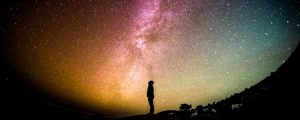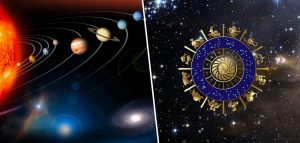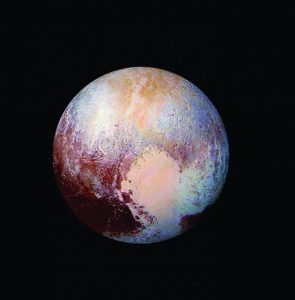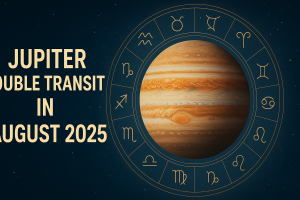Refutation of False Eclipse Rumor: How to Fact‑Check Every Solar Eclipse Claim

Few space events ignite the public imagination like a solar eclipse. That excitement also makes eclipses fertile ground for viral misinformation: “There’s a total eclipse next weekend!” “This eclipse will cause widespread internet outages!” “Pregnant people must not go outside!” These familiar headlines are more than misleading—they spread anxiety, sell bogus products, and distract from genuine science education. This guide offers a clear, evidence‑based refutation of false eclipse rumor cycles. You’ll learn how eclipse geometry works, the most persistent myths behind solar eclipse stories, and a practical checklist to verify claims within minutes.
Why Eclipse Rumors Spread So Easily
- Rarity plus urgency. Totality at any given spot on Earth is rare, so when a post claims “it’s coming soon,” FOMO pushes people to share before checking.
- Visual virality. Dramatic eclipse photos (often from past events) are recycled with new dates and locations, giving false rumors a veneer of authenticity.
- Algorithmic incentives. Platforms reward short, emotive posts. “Once‑in‑a‑lifetime!” outperforms a careful timetable.
- Cultural lore. Every region carries traditional beliefs about eclipses. Those stories can morph into modern “warnings,” becoming common rumor of solar eclipse events that feel familiar and therefore credible.
Eclipse Basics: The 60‑Second Refresher
To debunk confidently, remember three essentials:
- Alignment: A solar eclipse occurs only at New Moon when the Moon passes directly between Earth and the Sun.
- Shadows and types:
- Total (Moon fully covers the Sun along a narrow path).
- Annular (Moon appears smaller; a “ring of fire” remains).
- Partial (Moon covers only part of the Sun).
- Predictability: Eclipses are calculable decades in advance. If a post claims a surprise event, treat it with skepticism.
The 5 Most Persistent Myths Behind Solar Eclipse Hype (and the Facts)
1) “A surprise total eclipse will happen next week.”
Fact: There is no such thing as a surprise totality. Eclipse paths and timings are published years ahead by reputable ephemeris providers and astronomical agencies. If you can’t find the date on an official global eclipse calendar, the claim is almost certainly false.
2) “Eclipses cause health crises—don’t go outside.”
Fact: The danger is looking at the Sun without proper eye protection, not being outdoors. With certified solar viewers (ISO 12312‑2) or indirect projection methods, viewing is safe and educational. Normal outdoor activities are fine.
3) “Animals and pregnant people are at unique risk.”
Fact: While some animals change behavior due to sudden dusk‑like conditions, no robust evidence shows physiological harm. The same goes for pregnancy: there’s no medical basis for staying indoors solely because of an eclipse.
4) “Phones and cameras will be destroyed if you take pictures.”
Fact: Brief, wide‑angle shots during partial phases are typically safe. Long telephoto shots require solar filters to protect sensors—much like your eyes need certified solar viewers. It’s a matter of equipment, not doom.
5) “Eclipses trigger disasters or predict political events.”
Fact: These are classic myths behind solar eclipse narratives. Correlation is not causation; eclipses reflect celestial mechanics, not earthly fortunes.
How to Debunk a Viral Post in 3 Quick Checks (Bookmark This)
- Date & Type Check (1 minute).
Search an official eclipse catalog for the claimed date and see if any solar eclipse occurs, and if so, whether it’s total, annular, or partial. - Location & Visibility Check (1 minute).
If an eclipse occurs that day, verify its path. Totality is a narrow corridor; a city outside that path will not see a total eclipse—maybe a partial one, maybe nothing. - Time & Safety Check (1 minute).
Real predictions include exact contact times (start, maximum, end) in local time. Safety guidance will mention ISO‑certified solar viewers and pinhole projection. Posts lacking this detail are red flags.
Pro tip: Screenshots of old articles recirculate. Always cross‑check the year and the path map, not just the month and day.
Anatomy of a False Eclipse Rumor
Most hoaxes share a formula:
- Borrowed media: A breathtaking image from a past totality used as “proof” of a new event.
- Ambiguous geography: “Visible across the country!” rather than a path map.
- Inflated superlatives: “Strongest eclipse in a century,” “once‑ever,” or “Internet blackout.”
- Vague safety warnings: Fear‑forward language without citing optical standards or times.
Learning to spot these cues makes you a reliable resource when friends message, “Is this real?”
Science‑First Safety: What To Do During a Real Solar Eclipse
Even as we debunk the common rumor of solar eclipse events, let’s set the gold standard for real viewing:
- Use certified solar viewers labeled ISO 12312‑2; discard scratched or wrinkled viewers.
- Don’t stack regular sunglasses. They are not safe for solar viewing.
- Follow the filter rule for optics. Telescopes, binoculars, and telephoto lenses require front‑mounted solar filters designed for the device.
- Know the exception: During the brief phase of totality (when the Sun is completely covered), it’s safe to look directly; resume protection the moment bright sunlight reappears.
- Try indirect methods: Pinhole projectors, colanders, or tree‑leaf shadows create thousands of tiny crescents—fun and safe for kids.
Communicating Clearly: How Educators and Creators Can Help
- Lead with the map. A path of totality graphic instantly clarifies who actually sees what.
- Use precise language. “Partial eclipse with 37% coverage” beats “Big eclipse coming.”
- Time‑box your posts. Include year, UTC, and local time.
- Link to official resources for schedules and safety standards.
- Debunk respectfully. Most shares aren’t malicious. A kind correction invites learning.
Frequently Asked Questions (SEO‑Ready)
Q1: How can I tell if an eclipse date is real?
Check an official global catalog or national space agency site. If the date isn’t listed, it isn’t happening. This single step refutes most false eclipse rumor posts.
Q2: Why do different sources list different times?
Times vary by location and timezone conventions. Trusted sources provide both UTC and local times; look for the “first contact,” “maximum,” and “last contact” entries.
Q3: Are annular eclipses less dangerous to view?
No. Even at maximum annularity, a bright ring remains. Eye protection is required for every stage of an annular or partial solar eclipse.
Q4: Do eclipses affect mental or physical health?
Beyond eye‑safety considerations, there’s no evidence of direct health effects. Anxiety often stems from the myths behind solar eclipse stories—not the event itself.
Q5: Why are some cities hyped as “in the path” when they aren’t?
Confusion arises because partial coverage is widespread. Marketing sometimes blurs lines. Always verify with a path map showing the narrow corridor of totality.
Shareable Mini‑Checklist (Copy/Paste)
Is this eclipse post legit?
- Appears on an official eclipse calendar
- Shows a path map (not just a dramatic photo)
- Lists contact times in local time and UTC
- Mentions ISO 12312‑2 eye protection
- Links to credible sources
If any box is unchecked, you’re probably looking at a common rumor of solar eclipse—not a real event.
Conclusion: Replace Rumor With Wonder
Eclipses are predictable triumphs of celestial mechanics and human calculation. When we swap panic posts for path maps, and superstition for certified viewers, a solar eclipse becomes what it truly is: a rare, shared moment of awe. Learn the patterns, verify the claims, and help your community move beyond the myths behind solar eclipse stories. The night‑side of Earth during daytime, the sudden chorus of crickets, the glittering corona—these deserve our attention far more than hoaxes do.





